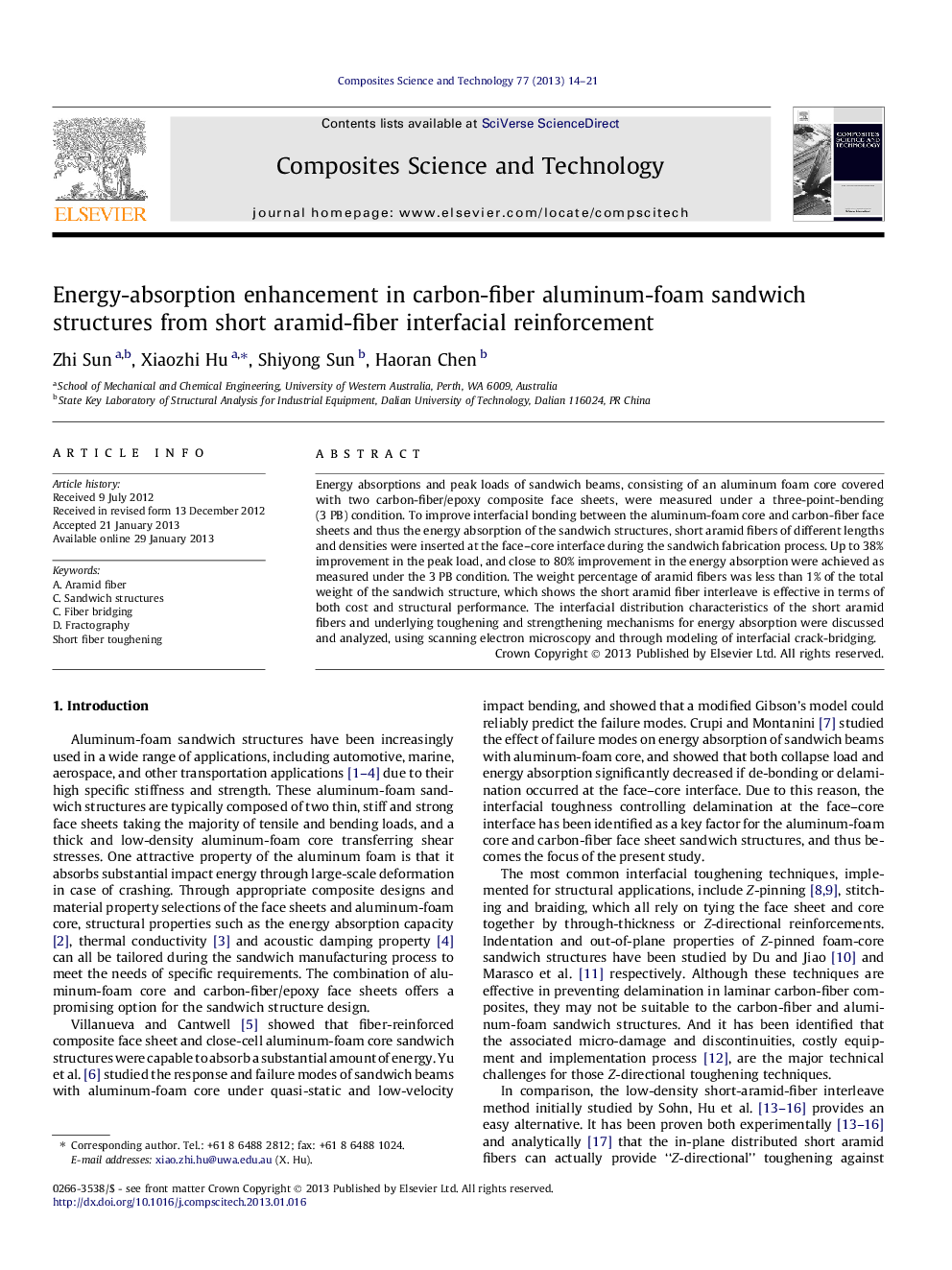| Article ID | Journal | Published Year | Pages | File Type |
|---|---|---|---|---|
| 820565 | Composites Science and Technology | 2013 | 8 Pages |
Energy absorptions and peak loads of sandwich beams, consisting of an aluminum foam core covered with two carbon-fiber/epoxy composite face sheets, were measured under a three-point-bending (3 PB) condition. To improve interfacial bonding between the aluminum-foam core and carbon-fiber face sheets and thus the energy absorption of the sandwich structures, short aramid fibers of different lengths and densities were inserted at the face–core interface during the sandwich fabrication process. Up to 38% improvement in the peak load, and close to 80% improvement in the energy absorption were achieved as measured under the 3 PB condition. The weight percentage of aramid fibers was less than 1% of the total weight of the sandwich structure, which shows the short aramid fiber interleave is effective in terms of both cost and structural performance. The interfacial distribution characteristics of the short aramid fibers and underlying toughening and strengthening mechanisms for energy absorption were discussed and analyzed, using scanning electron microscopy and through modeling of interfacial crack-bridging.
